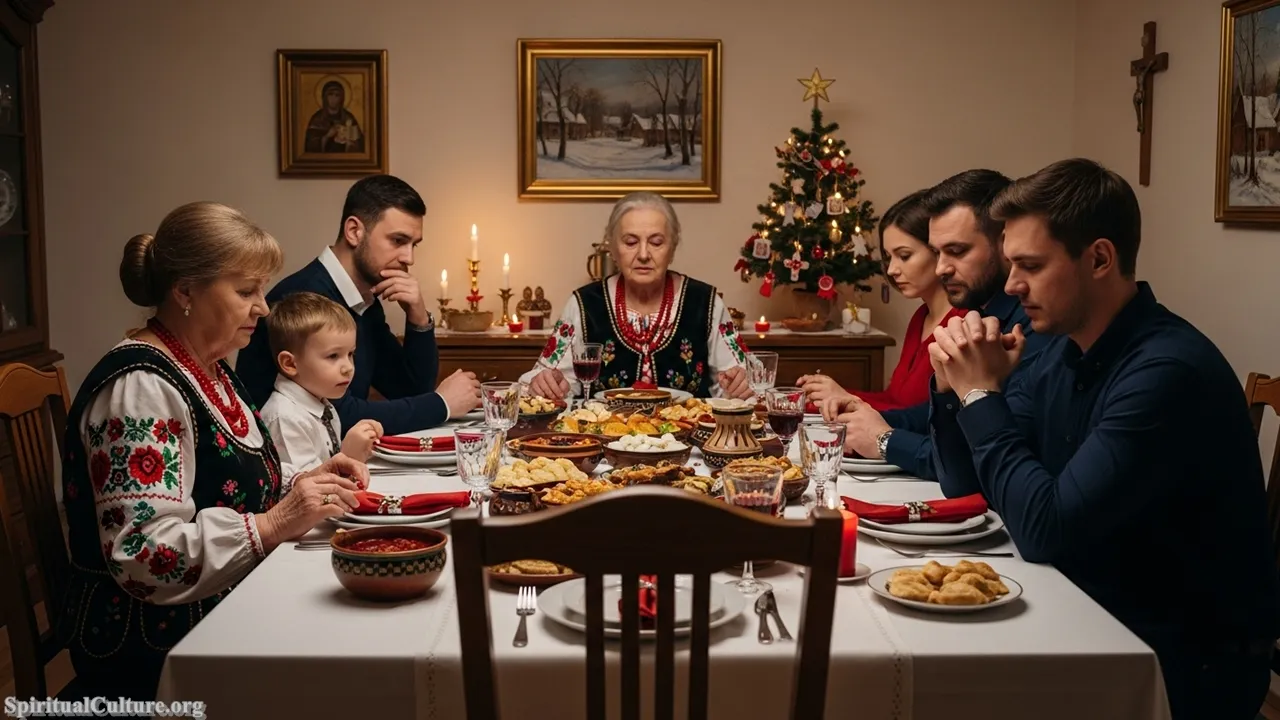Throughout human history, the pursuit of healing has never been purely physical. From the earliest tribal rituals to the codified traditions of ancient civilizations, religion and medicine have often walked hand in hand. In every corner of the world, spiritual worldviews have profoundly shaped how societies understand illness, health, and the path to recovery. This article explores how religion has influenced traditional medicine, not as a relic of the past, but as a living testament to the deep human longing for wholeness — body, mind, and soul.
As Spiritual Culture, we invite you to journey with us through time, tradition, and transcendence. Why did ancient shamans chant before treating the sick? Why do some cultures still rely on prayer as much as on herbs? How did faith shape the way early doctors saw their role — and how does it still influence medical ethics today?
This exploration is not just historical — it’s deeply human. For in every culture, healing has never been just about curing symptoms. It’s about restoring balance, reconnecting with the divine, and remembering who we are.
The Sacred Origins of Healing
Medicine as a Gift from the Divine
In many early societies, healing was inseparable from the sacred. The healer was often a priest, shaman, or spiritual leader — someone seen as having access to divine knowledge.
- In ancient Egypt, medicine was closely tied to religion. Temples were centers of healing, and priests of Sekhmet (goddess of healing and war) practiced medicine under divine guidance.
- In the Vedic tradition of India, Ayurveda was revealed to sages (rishis) through meditation and divine insight. Health was a state of harmony between the self (atman), the universe (brahman), and the doshas (bodily energies).
- In Indigenous cultures across the Americas and Africa, illness was often seen as a spiritual imbalance. Healing involved rituals, offerings, and ceremonies to restore harmony between the individual and the spirit world.
The Role of the Shaman
In tribal societies, the shaman played a central role. Their healing practices involved:
- Entering trance states to communicate with spirits
- Using herbs received through visions
- Diagnosing illness by divining spiritual causes
The spiritual worldview made healing not just about biology, but about energetic and relational wholeness.
Scriptures, Saints, and Sacred Remedies
Religious Texts as Medical Guides
Many sacred scriptures contain medical wisdom, rituals of purification, and ethical guidelines related to health.
- The Bible includes instructions on cleanliness, quarantine, and dietary laws (Leviticus 11–15).
- The Quran speaks of healing as a divine mercy: “And when I am ill, it is He who cures me” (Quran 26:80).
- The Talmud contains detailed discussions of medical ethics and healing practices.
- Buddhist texts emphasize mindfulness, diet, and compassion as essential to well-being.
- Hindu scriptures speak of health in terms of dharma (cosmic law) and karma (spiritual cause and effect).
These writings offered not only practical insights, but a moral and spiritual framework for healing. Medicine, then, was not neutral — it was sacred service.
Saints, Holy Men, and Miraculous Cures
In many traditions, saints and holy figures were seen as channels of divine healing.
- Christianity reveres saints like St. Roch (patron of plague victims) and St. Luke (physician and evangelist).
- Islamic Sufis like Rumi and Ibn Arabi linked healing with divine love and inner purification.
- In Hinduism, figures like Lord Dhanvantari (god of Ayurveda) are invoked in healing prayers.
- Buddhist monks in places like Tibet developed intricate systems of healing based on both herbs and meditation.
Miracles, relics, and sacred water (like the Lourdes spring) continue to attract millions seeking healing not from a pill, but from a touch of the divine.
Mind-Body-Spirit: A Unified Model
Illness as Spiritual Disruption
Traditional medicine, influenced by religion, often views sickness as a sign of spiritual disconnection — not merely as a mechanical failure.
- A person is ill because they are out of harmony: with nature, with ancestors, with moral law, or with the divine.
- Healing must address the inner world: guilt, grief, fear, or spiritual impurity.
This is echoed in:
- Chinese medicine, where qi (life energy) must flow freely
- Ayurveda, where mental and spiritual doshas matter as much as physical ones
- African traditional medicine, where ancestral wrath or broken taboos can cause illness
Thus, healing requires rebalancing the soul, not just administering herbs or performing surgery.
Rituals as Medicine
Religious rituals often function as therapeutic tools:
- Confession and absolution can relieve guilt and psychosomatic symptoms
- Pilgrimage can renew a sense of purpose and open one to healing grace
- Chanting or prayer can calm the nervous system and invoke divine peace
- Anointing with oil or water can carry symbolic and spiritual power
These acts are more than symbolic — they work on the heart level, where healing begins.
Cultural Traditions that Endure
Indigenous Healing in the Modern World
In many parts of the world, traditional medicine continues to be the first line of care, often practiced in parallel with modern medicine.
- In Africa, herbalists and diviners work alongside doctors in rural areas.
- In Latin America, curanderos use Catholic prayers, candles, and herbs in healing rituals.
- In Southeast Asia, Buddhist and animist healing practices remain deeply embedded in cultural identity.
- In Native American communities, sweat lodges, smudging, and vision quests continue as healing practices.
These systems often include:
- Herbal pharmacology (some now validated by science)
- Spiritual counseling
- Community support
- Deep attention to dreams, symbols, and intuition
They affirm that healing is a communal and sacred event, not just a personal prescription.
When Science Meets Spirituality
Complementary and Alternative Medicine (CAM)
Today, many people — even in secular societies — are rediscovering the spiritual dimension of healing through:
- Meditation and mindfulness (from Buddhism)
- Yoga and Ayurveda (from Hinduism)
- Energy healing (influenced by Taoism and animism)
- Herbalism (rooted in indigenous traditions)
- Prayer and faith-based healing
The growing interest in holistic and integrative medicine reflects a return to the ancient intuition: that we are more than bodies, and healing is more than curing.
The Ethics of Care
Religious teachings continue to shape how we care, not just how we cure.
- The Christian ethos of compassion built many hospitals and nursing orders.
- Buddhist mindfulness informs palliative care and hospice movements.
- Islamic charity (zakat) supports medical access for the poor.
- Jewish ethics emphasize the sacred duty to preserve life (pikuach nefesh).
Even modern medical ethics — autonomy, beneficence, non-maleficence, and justice — have roots in religious morality.
Challenges and Misunderstandings
When Belief Conflicts with Biomedicine
There are times when traditional religious beliefs may challenge modern health systems:
- Refusal of blood transfusions (e.g., Jehovah’s Witnesses)
- Reliance on prayer alone in life-threatening conditions
- Rejection of vaccines or contraception based on religious doctrines
These tensions invite respectful dialogue. Religion can offer deep insight, but it must not block life-saving care. The goal is integration, not opposition.
The Need for Cultural Competence
In a globalized world, healthcare providers must learn to honor patients’ beliefs:
- A Muslim patient may want prayer before surgery
- A Hindu elder may prefer Ayurvedic treatments
- An African-American Christian may value prayer and anointing oil
Understanding this spiritual dimension is part of true healing — not just fixing, but listening, respecting, and holding sacred space.
Reflect and Reimagine
The story of medicine is not just a story of science — it is a story of the sacred, written into every culture, every prayer, every healing touch. Religion has always offered meaning, not just methods. It has framed suffering within a moral cosmos, made sense of pain, and offered hope beyond it.
As we look to the future, may we not forget the wisdom of the past. May we see healing not just as a technological act, but as a sacred calling — to serve, to love, to restore the broken body and the broken spirit alike.
Let us ask:
What if true healing comes when we remember we are whole — body, soul, and spirit?
What if the medicine of tomorrow rediscovers the mystery that once moved the hands of ancient healers?
Spiritual Culture invites you to explore further.
In every healing touch, every whispered prayer, and every herbal brew, there lies a deeper truth:
To heal is to love. To love is to know the sacred within.




